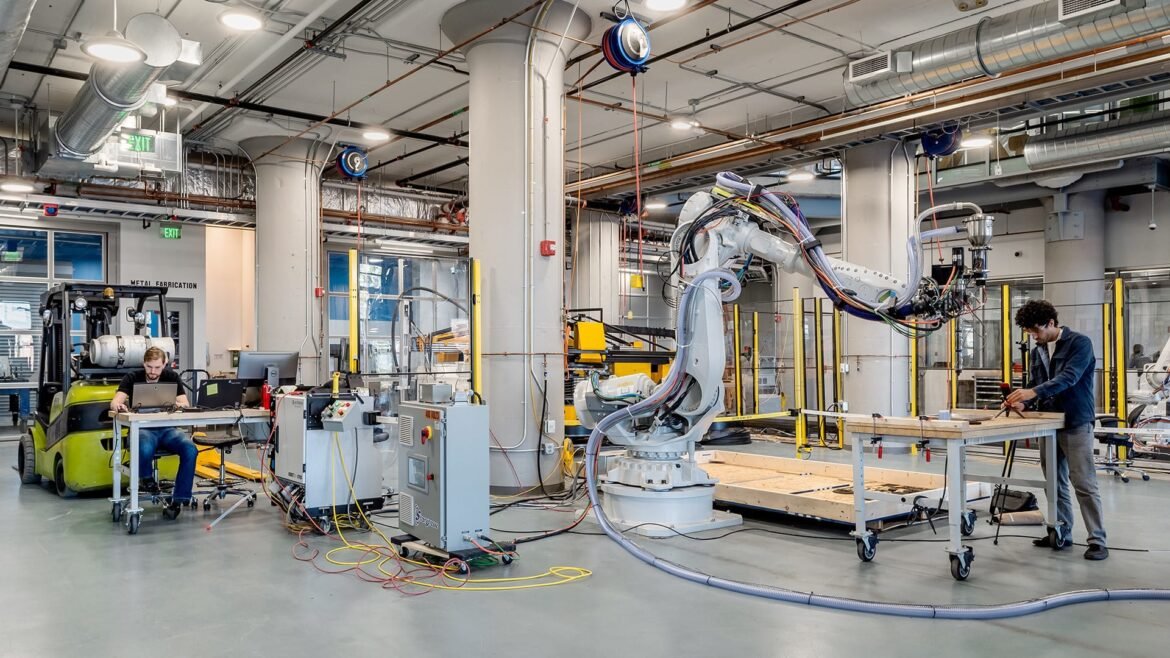Introduction
The laser cutting industry is experiencing a revolutionary transformation, thanks to the amazing advancements in Artificial Intelligence (AI) and Robotics. What was once a manual and somewhat automated process is now becoming a fully automated, intelligent manufacturing system. These technologies are boosting precision, efficiency, and scalability, making laser cutting an essential part of modern industrial production.
In this article, we’ll explore how AI and robotics are reshaping laser cutting, the advantages they offer businesses, and what the future looks like for this rapidly evolving industry.
The Role of AI in Laser Cutting
AI is playing a crucial role in making laser cutting operations better. Here’s how:
AI-Powered Precision and Efficiency
Traditional laser cutting relied on manual programming and the skill of the operator, which often led to inconsistencies. AI-driven software now allows for real-time adjustments, improving precision while reducing wasted material.
- Adaptive Cutting Algorithms: AI can analyze the material’s properties, thickness, and heat tolerance, adjusting the laser’s intensity for the best results.
- Self-Learning Systems: AI-powered machines can learn from previous cuts to improve accuracy and reduce errors over time.
Automated Quality Control
AI-integrated cameras and sensors provide real-time quality assurance, detecting defects and making instant corrections.
- Computer Vision Technology: Identifies defects at a microscopic level, ensuring every cut meets industry standards.
- Error Prediction & Prevention: AI can predict potential machine failures and prevent breakdowns before they happen.|
The Role of Robotics in Laser Cutting
Robotic systems are revolutionizing laser cutting by adding speed, flexibility, and automation.
Robotic Arms for Complex Cuts
Modern laser cutting systems are incorporating robotic arms that can cut intricate designs with incredible accuracy.
- Multi-Axis Movement: Robots with 6-axis or 7-axis movement can create complex cuts that were previously impossible.
- Automated Material Handling: Robotic arms can load, position, and remove materials, reducing the need for manual labor.
High-Speed Production with Minimal Human Intervention
Robotic laser cutting systems operate at incredibly high speeds, making them perfect for mass production.
- 24/7 Unmanned Operation: Robots can work continuously without needing breaks, significantly increasing production efficiency.
- Remote Monitoring & Control: Operators can control robotic laser cutters remotely through AI-powered dashboards.
The Future of Laser Cutting: What’s Next?
AI-Driven Customization & Personalization
With AI, laser cutting machines can provide on-demand customization, allowing businesses to offer unique, tailor-made products.
- Smart Design Recognition: AI can understand hand-drawn sketches, images, or 3D models and turn them into laser-cut designs.
- Instant Prototyping: AI-driven laser cutters enable rapid prototyping, reducing the time it takes from design to production.
The Rise of Autonomous Laser Cutting Factories
Fully automated factories, where AI and robotics work together, are the future of manufacturing.
- Predictive Maintenance: AI will predict wear and tear, automatically scheduling maintenance before failures occur.
- IoT-Enabled Smart Factories: Laser cutters will be connected to cloud-based systems, optimizing production through real-time data analysis.
Sustainability & Eco-Friendly Innovations
AI and robotics are making laser cutting more sustainable and environmentally friendly.
- Energy-Efficient Lasers: New laser technologies use less power, reducing carbon footprints.
- Material Optimization Algorithms: AI minimizes waste by optimizing cutting paths, making production more sustainable.
Conclusion
The integration of AI and robotics is revolutionizing laser cutting, offering unmatched precision, efficiency, and automation. From adaptive AI-driven software to robotic arms capable of complex cuts, these innovations are making manufacturing smarter and more cost-effective.
As we move toward fully autonomous factories, businesses that adopt AI and robotic laser cutting systems will have a significant competitive advantage. The future of laser cutting isn’t just about cutting materials—it’s about cutting costs, improving quality, and revolutionizing production.
Are you ready to embrace the future of laser cutting? Stay ahead with CreativeRoots.ae of the curve by investing in AI and robotic-powered manufacturing solutions today.

